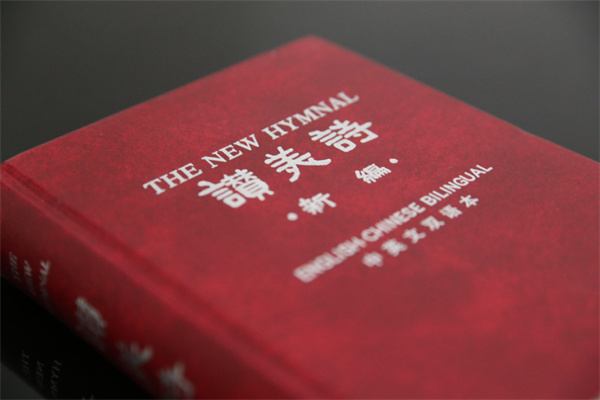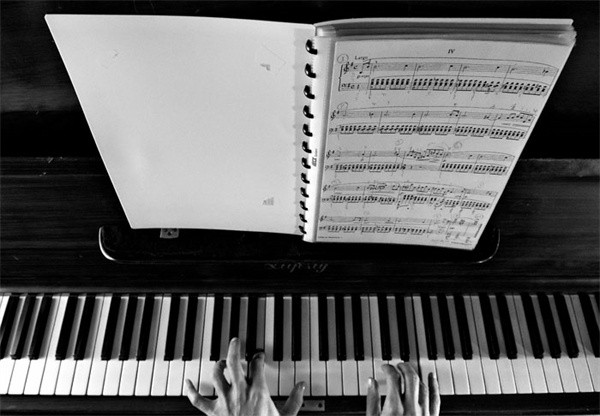
 :Going With The Lord Song (《与主同去歌》)
:Going With The Lord Song (《与主同去歌》)
There is a consensus that “Christianity is the singing religion,” not only because songs are always associated with Christian worship but also because they are rooted in Christian theology. The human voice is a part of God’s creation, and with it, humans can speak, express their emotions and sing praises to God. There are ample records of this in the Bible: from the ancient hymns of Moses and Hannah, from the Psalms and other wisdom books in the Old Testament, to the New Testament in which Jesus sang with his disciples and Paul made the exhortation to speak to one another with “Psalms, hymns and spiritual songs”.
In addition, songs are a part of Church history and legacy: from the earliest Doxology, the compositions of Ambrose, to Gregorian chants, and especially the products of the Reformation begun by Martin Luther.

(By: Alex Fan)
Consequently, the composition of hymns has spread globally, and most Christians can now sing hymns in their own languages. Christian music assumes many forms, including large choral compositions, but the hymn or song of praise is the most basic and popular form which has its own unique sacredness and widespread impact.
In 1981, the Committee of the Three-Self Patriotic Movement of the Protestant Churches (TSPM) and China Christian Council (CCC) set up a working group on hymns, which was later renamed the editorial department of hymns (New Edition) (hereinafter referred to as the New Hymnal), composed of four people that included myself, Shi Qigui 史奇珪, Lin Shengben 林声本 and Hong Lvming 洪侣明. As the deputy general Secretary of the China Christian Council, I assumed leadership of the group.
At that time, the local churches were resuming their worship, and both the Bible and hymnals were indispensable, but most of these had been lost in the Cultural Revolution. I fully understood the urgency of reprinting them. The Bible could be reprinted according to the old version, but the hymns used by different denominations in the past were not the same. With the practice of union worship, it became impossible to use hymns of one denomination as a general model, and it became urgent to edit a new hymnal.
At the beginning of my work, I was not so clear about what kind of hymnal I wanted to compile. For a while, I simply thought that it would be just a collection of hymns that believers were familiar with and loved. Bishop Ding Guangxun (K. H. Ting) 丁光训, President of CCC, and Bishop Zheng Jianye 郑建业, General Secretary of CCC, had long-term vision and formulated the basic principles of “Mutual Respect and Comprehensiveness” and “further contextualization of hymns,” which enabled us to identify our goals. These two principles reflect the context and advancing direction of the Church in China.

(By: Amy Carpenter)
In terms of “mutual respect,” we have built the church according to the Three-Self Principle and have entered the post-denominational era. The characteristics of the original denominations and the hymns they used have not been totally negated. In fact, based on the spirit of mutual respect, their essence has been absorbed. No further discussion on this will be made here since it is not the focus of this paper.
As for the further contextualization of hymns, we, as Chinese Christians, have our own profound Chinese cultural resources. Just as all Christians can express their feelings for God using their own cultural forms, so can we. What is more, our predecessors have left some works as examples for us, so we should continue to work hard. No one in the editorial department has any objection to this point and all are willing to put it into practice. The numerical musical notation of the New Hymnal was published in 1983 and the preface was written by Bishop Zheng himself. He listed “Indigenization of Sacred Music” as the title of a large paragraph. Today, when I read it, I cannot help but admire his sagacity and foresight.
As some hymns were not included in the New Hymnal when it was published, and the need of Chinese churches continued to grow, the National CCC&TSPM decided in 2003 to publish a supplementary edition, with Shi Qigui and Hong Lvming and myself as the main editors, and including other personnel such as Luo Liguang 罗黎光, Sheng Yin 盛茵, Gu Yuntao 顾云涛 and Lin Dehua 林德桦. We still follow the established principles on the “Indigenization of Hymns in China.” The Supplementary Volume was published in 2009.
…………
 Click here to download the full text
Click here to download the full text

(By: Amy Carpenter)
About author:
Born in Shanghai in May 1931, Cao Shengjie studied at the Zhongyang Theological Seminary (later merged with Nanjing Union Theological Seminary in 1952) of St. John’s University in Shanghai in 1950. After graduating from Nanjing Union Theological Seminary, she served as a preacher at the St. Peter’s Church in Shanghai in 1953. Since 1991, she had served as the vice president of China Christian Council and the member of the Commission on Religion and Peace in China. In 1997, she began to serve as the president of Shanghai Christian Council and the vice chairperson of the Association of Chinese Religions in Shanghai. She was elected as the fifth president of China Christian Council in 2002.
Editor: Xiao Tang